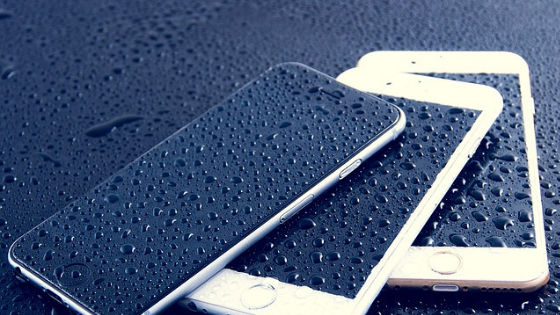You may have already seen the IP67 and IP68 expressions in mobile specs, inc
luding here at Teknologya. They are codes for the levels of protection against water and dust, and tell you how protected your gadget is against the weather. Find out the difference between the highest degrees of IP certification and choose your smartphone.

What is IP Code?
The IP Code or Certification, whose correct name is Degree or IP Protection Classes, is an international standard defined by the International Electrotechnical Commission ( IEC) Standard that concerns the level of protection of electronic devices, such as smartphones, against the intrusion of foreign elements like water and dust particles.
These elements may come into contact with internal components in a variety of ways, such as poorly shielded headphone or USB connectors, cracks between cell phone seams, poor screen sealing, or even by user intervention when opening the device in an unauthorized manner.
Today, the IP Code serves as a guide for users to know if a cell phone (or any other electronic) has minimal protection against exposure to dirty or damp environments, so that your cell phone has a longer life.
IP67 x IP68: what’s the difference?
When we talk about cell phones, the IP certification codes that are most seen in specifications are IP67 and IP68. That, although similar, have differences. The code today uses two numbers, the first one determines the degree of protection against dust, while the second informs the degree of protection against water.
The degrees of protection against dust (the first number) are as follows:
- 0: No protection;
- 1: Protection against solid objects 50 mm in diameter or more (any part of the human body, unless the contact is deliberate);
- 2: Protection against solid objects 12.5 mm in diameter or more (fingers or similar objects);
- 3: Protection against solid objects 2.5 mm in diameter or more (tools, thick cables);
- 4: Protection against solid objects with 1.0 mm diameter or more (cables in general, fine screws, large ants);
- 5: Protection against dust (dust may still enter the apparatus but not enough to damage it);
- 6: Dust-proof (fully sealed);
- X: Missing information.
The degrees of protection against water (the second
number) are as follows:
- 0: No protection;
- 1: Protected against drops falling vertically (rainfall of 1 mm per minute);
- 2: Protected against drops that fall vertically with a body inclined up to 15° (rainfall of 3 mm per minute, at an angle of up to 15°);
- 3: Protected against water spray (one spray, for up to 5 minutes in continuous mode or 10 minutes in an intercalated way);
- 4: Protected against gushing water (an open faucet, for up to 10 minutes in an intercalated way);
- 5: Protected against water jets (one 6.3 mm nozzle, 75 l/min volume, for up to 15 minutes);
- 6: Protected against powerful water jets (one nozzle 12.3 mm, volume 100 l/min, for up to 3 minutes);
- 6K: Protected against powerful jets of higher pressure (a 6.3 mm nozzle with a pressure of 10 bar, volume of 75 l/min, for up to 3 minutes);
- 7: Protected against temporary immersion in water of up to 1 meter for 30 minutes (water can enter, but not enough to damage the device);
- 8: Protected against continuous immersion in water ( the depth is defined by the manufacturer, but the limit is generally 3 meters);
- 9K: Protected against water from steam jets and high pressure (jets 80° C with pressure from 80 to 100 bar, volume from 14 to 16 l/min, for up to 2 minutes);
- X: Missing information.
Note that other than dust protection, there is not a degree that will make a cell phone completely waterproof. So be careful when exposing electronics to moisture.
In this way, we have the following:
- IP67: Protected against dust and resistant to a dip in water up to 1 meter deep, for 30 minutes;
- IP68: Protected against dust and resistant to continuous water diving, usually up to 3 meters deep.
Thus, an IP67 phone resists a dip in a shallow pool for 30 minutes while an IP68 can (in theory) face a dive of up to 3 meters indefinitely. Lastly, both will have no problems with dust and sand. However, manufacturers advise users not to do this and damages from liquids are not usually covered under warranty. Always consult the manufacturer of the appliance.
That way, the IP Code is a guide for the user to know how much water and dust a cell phone supports before it can be broken down. However, nothing is definitive or covered 100% by the fence. With extended wear time, the protection also tends to wear.
